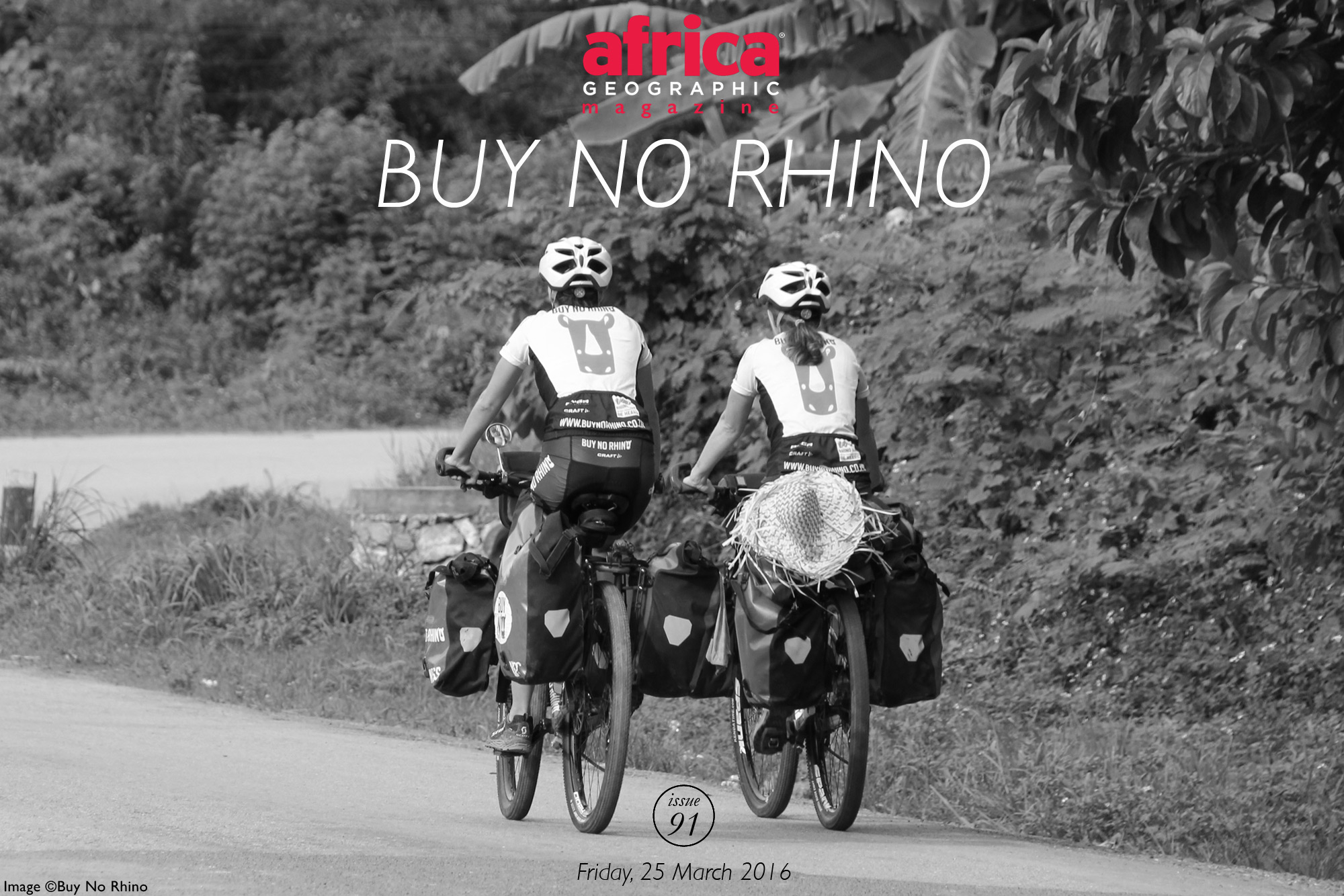
Two sisters, eight countries, 6,000km, one mission - save the rhino

In April 2015, we embarked on a great adventure. We travelled through eight Asian countries – from Hong Kong to Singapore – on our mountain bicycles – loaded to the brim with front and back panniers carrying all of our essential survival equipment. Our aim was to raise awareness about the rhino poaching crisis in Africa and call for a greater focus on demand reduction as a conservation strategy.
We chose to travel to Southeast Asia because African rhinos are being slaughtered to cater to the high demand for rhino horn in these countries. Thailand and Laos are often named as transit countries that facilitate the smuggling. At the same time, Vietnam and China have been notably identified as the biggest drivers of poaching, with some sources claiming that Vietnam is responsible for up to 80% of rhino horn consumption. The country’s rapid economic development in the last decade has been cited as one of the main reasons why the demand for wildlife products such as bear bile, shark fins, tiger bones, pangolin scales and, of course, rhino horn is higher than ever.


Our vision was to inspire people living across Southeast Asia to realise that they have the power to change their surroundings, but our main focus was Vietnam. We believe that educating youth is key to curbing the demand for rhino horn in Asian countries, so we visited as many schools as possible on our journey – starting the day after our arrival in Hong Kong.
In each school, we gave educational talks about the rhino and implemented the Rhino Art Project, which aims to increase conservation awareness and cultivate the next generation of wildlife ambassadors by inviting young people to express themselves through art. The final objective of this project is to gather the most significant number of ‘Children’s Art Voices’ in support of rhino protection and use them as a worldwide call to action against rhino poaching. And we couldn’t believe how enthusiastic kids were about saving this species! Throughout our eight-month tour, we also spent a considerable amount of time talking at universities and English clubs across the region and collecting signatures for the World Youth Wildlife Declaration, which also allowed adults to voice their opinions and support.
Supply and demand
You might be surprised to hear that rhino horn is not traditionally used as an aphrodisiac. Tom Milliken, a rhino expert from TRAFFIC, clarifies that “the surge in rhino horn demand from Vietnam has nothing to do with meeting traditional medicine needs. It’s rather to supply a recreational drug to partygoers or to con dying cancer patients out of their cash for a miracle rhino horn cure that will never happen.”
A few years ago, a powerful Vietnamese general claimed that he was cured of cancer by regularly drinking ground rhino horn. Since then, this myth has spread, and the non-traditional use of rhino horn as a magical cancer cure has exploded – which stimulates rhino poaching.
Recently, the utilisation of rhino horn has further diversified in Vietnam. It is increasingly regarded amongst the affluent elite as a status symbol. It can be a special gift or a bribe in the business world. It is also believed that rhino horn works as a body detoxifier following excessive consumption of alcohol or rich food. This conviction makes rhino horn very popular as a party drug or hangover cure, even among the younger generation.
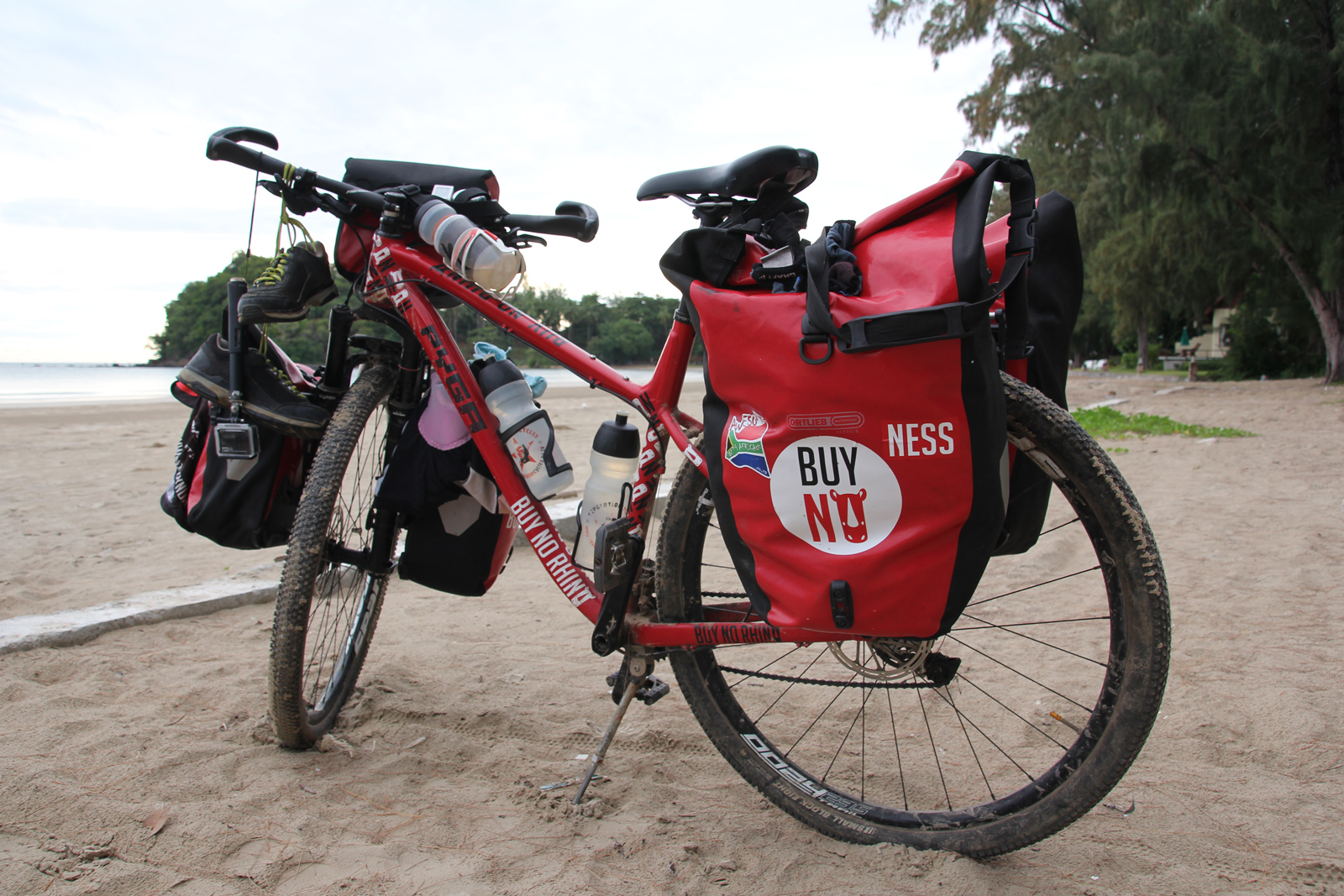

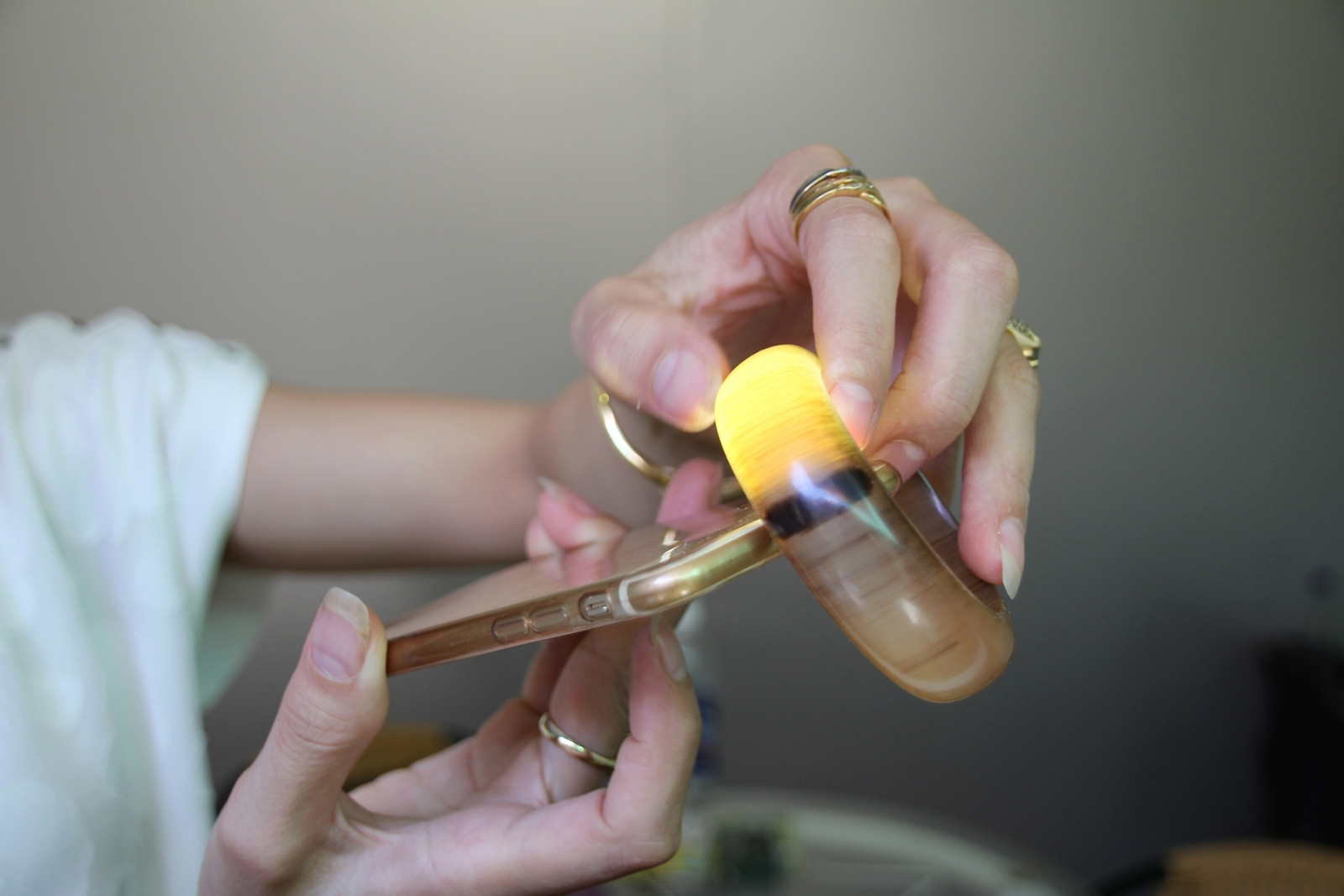
The users truly trust in the alleged medicinal powers of the horn
Talking to many people of different ages and backgrounds, we were surprised by how deeply these superstitious beliefs are ingrained. The users truly trust in the alleged, but never proven, medicinal powers of the horn. Many people told us about the use of rhino horn in their own families or had seen rhino horn being exhibited in homes. The younger generation might not always believe in the healing effects of rhino horn. If someone in their family were to fall ill, many would feel obliged to explore any possible remedy, including buying expensive and illegal wildlife products. We even heard stories about rhino horn ‘touts’ deliberately targeting terminally ill patients and their families.
It goes without saying that this illicit trade is a very profitable one! The black market is controlled by criminal syndicates, which often involve the same gangs that are guilty of human trafficking and other illegal wildlife trade – including products such as abalone, ivory and tiger bones. Sadly, “the only people benefitting from the current rhino poaching crisis are those running the criminal networks, who are making huge profits with little fear of prosecution in Asian markets,” said Milliken.
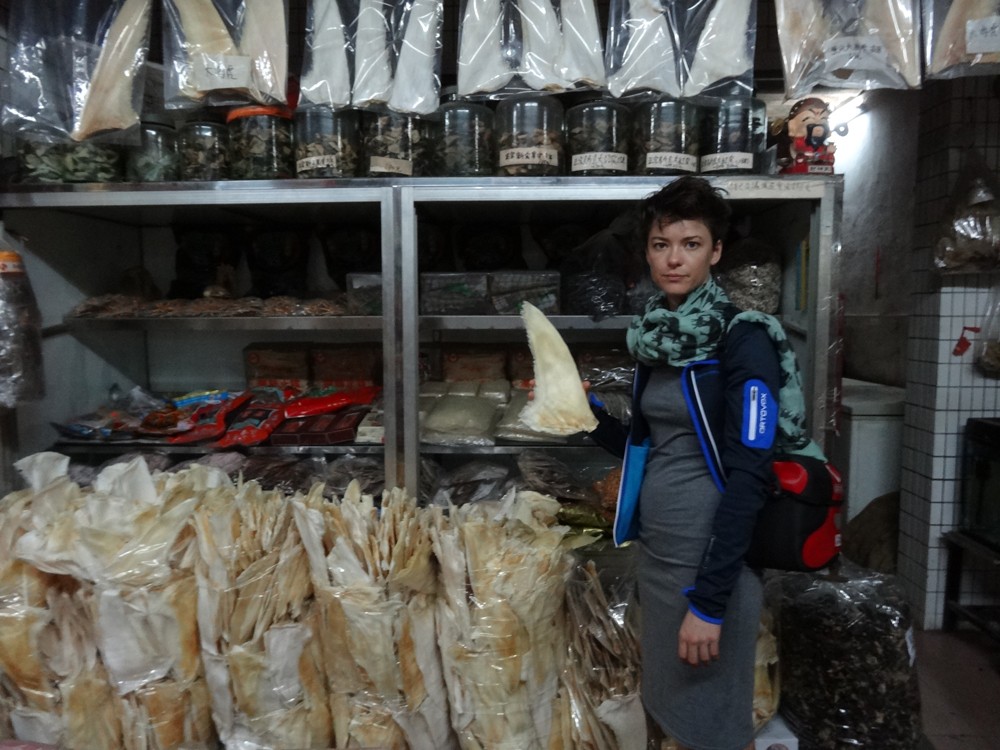
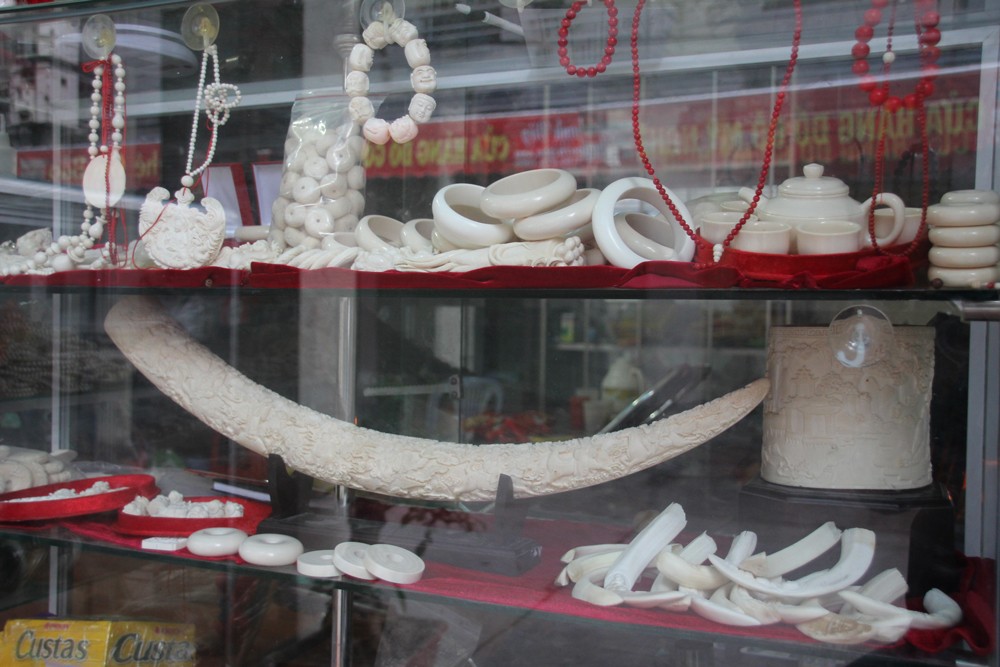
The search for a rhino poaching solution
Many different solutions are being discussed to increase the security of rhinos left in South Africa – from dehorning the animals, dying the horn pink, or even poisoning the horn so that it will affect the end-user.
Recently, discussions have erupted about the planned sale of artificially manufactured rhino horn. Conservationists in Vietnam are convinced that this will expand the market and may even enforce the belief that rhino horn is an effective medicine. They fear that it would also complicate law enforcement and lead to more rhino killings.
New technologies such as drones, satellite imagery, GPS tracking and apps are being tested to combat wildlife crime, and a great deal is already being done in South Africa to stop those criminals and cut down on rhino poaching and horn smuggling. But protecting this iconic species is only part of the solution. We believe that the only viable and long-term solution is to stop the demand for horn. You only have to look back throughout history to see that demand reduction has repeatedly been successful.
In the past, there have been ever-shifting peaks in rhino horn consumption in various countries. At different times in the last century, Japan, South Korea and Taiwan were major rhino horn consumers, and the markets in these countries were also often correlated with strong economic growth. When the Taiwanese market was at its height, Zimbabwe lost most of its rhinos. However, thanks to a strong political will, international pressure and a focus on education, each country was able to curb the demand for rhino horn, and today, these countries no longer pose a threat to rhinos. We believe that this can be done again today.
And it has to be done before it is too late!
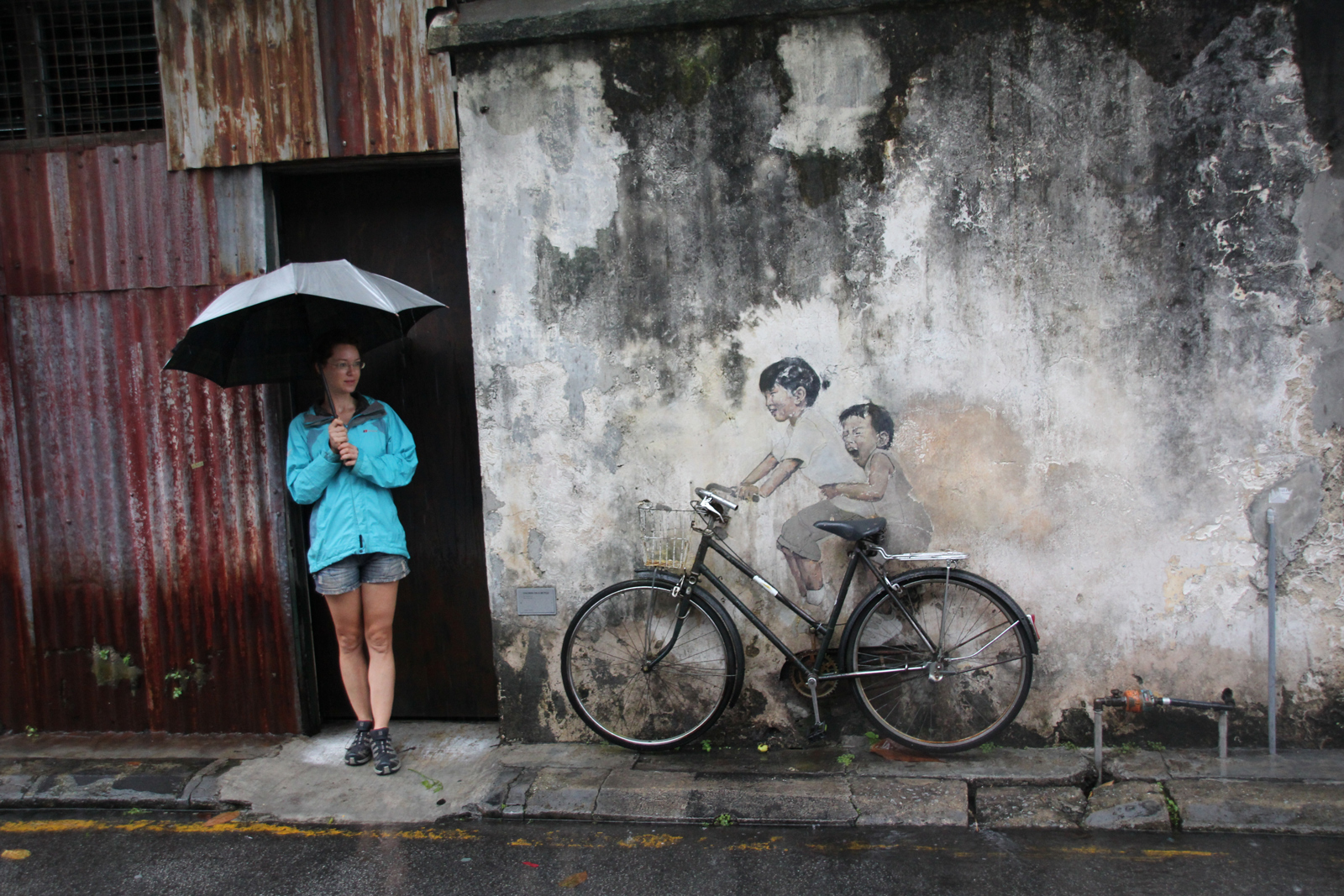

Legalising the rhino horn trade
The heated debate about legalising the rhino horn trade often flares up in South Africa. Private rhino breeders John Hume and Johan Kruger even launched successful legal action to lift the domestic ban of rhino horn and received a lot of media attention in doing so.
This is a very controversial and complex topic, and we asked many Vietnamese for their opinion. The general reaction was one that showed a complete lack of understanding. How could a country fight for the survival of the rhino and at the same time want to legalise the trade of horn?!
Meanwhile, Asian governments are apparently leaning back and waiting for the final outcome of this discussion instead of concentrating on cracking down on smuggling and the illegal sale of rhino horn. The fact that there is a debate is already sending a dangerous signal to Asian countries.
The idealist in me says that a unified voice combined with an investment in education will lead to demand reduction, which would be a more effective measure in the long run.
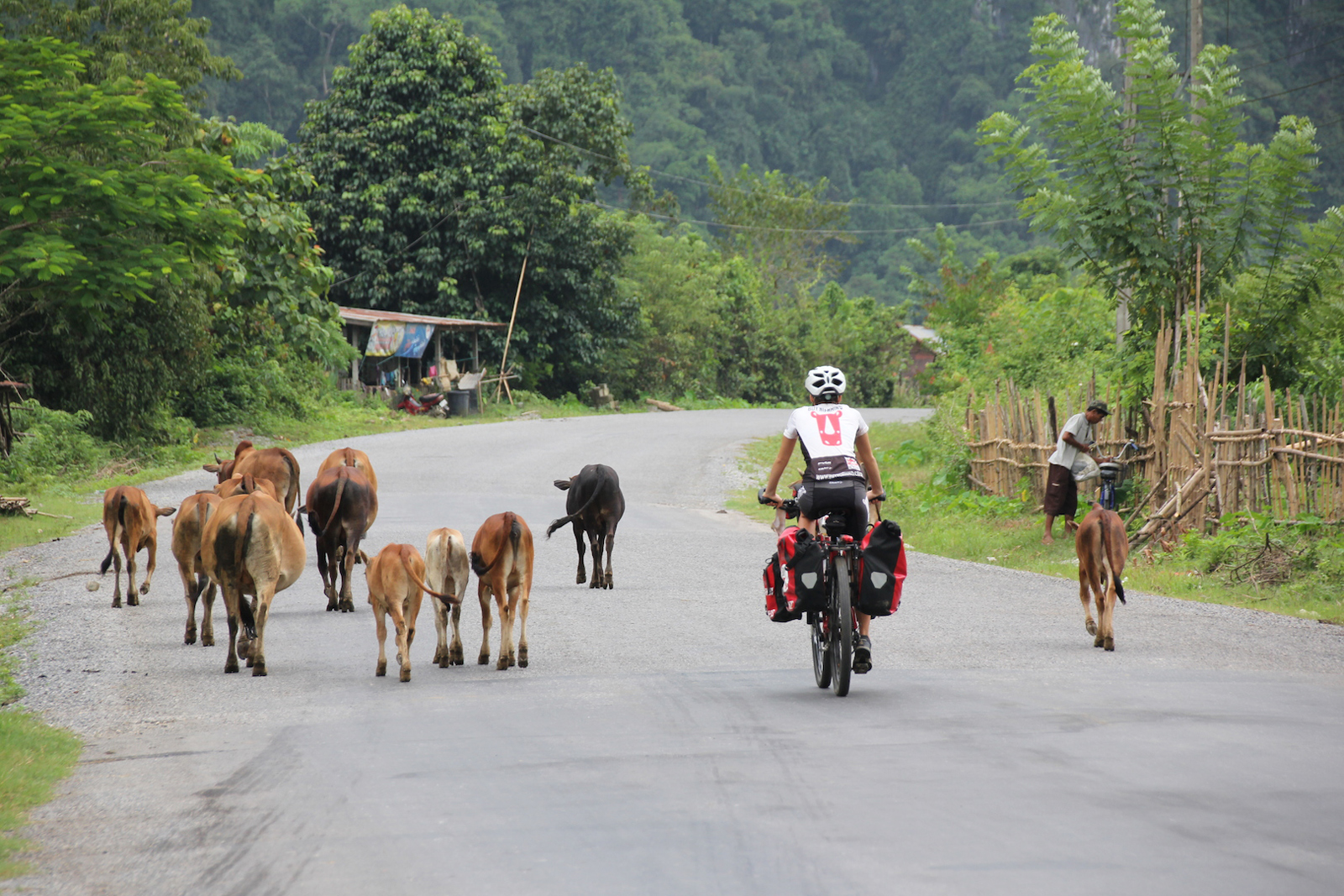
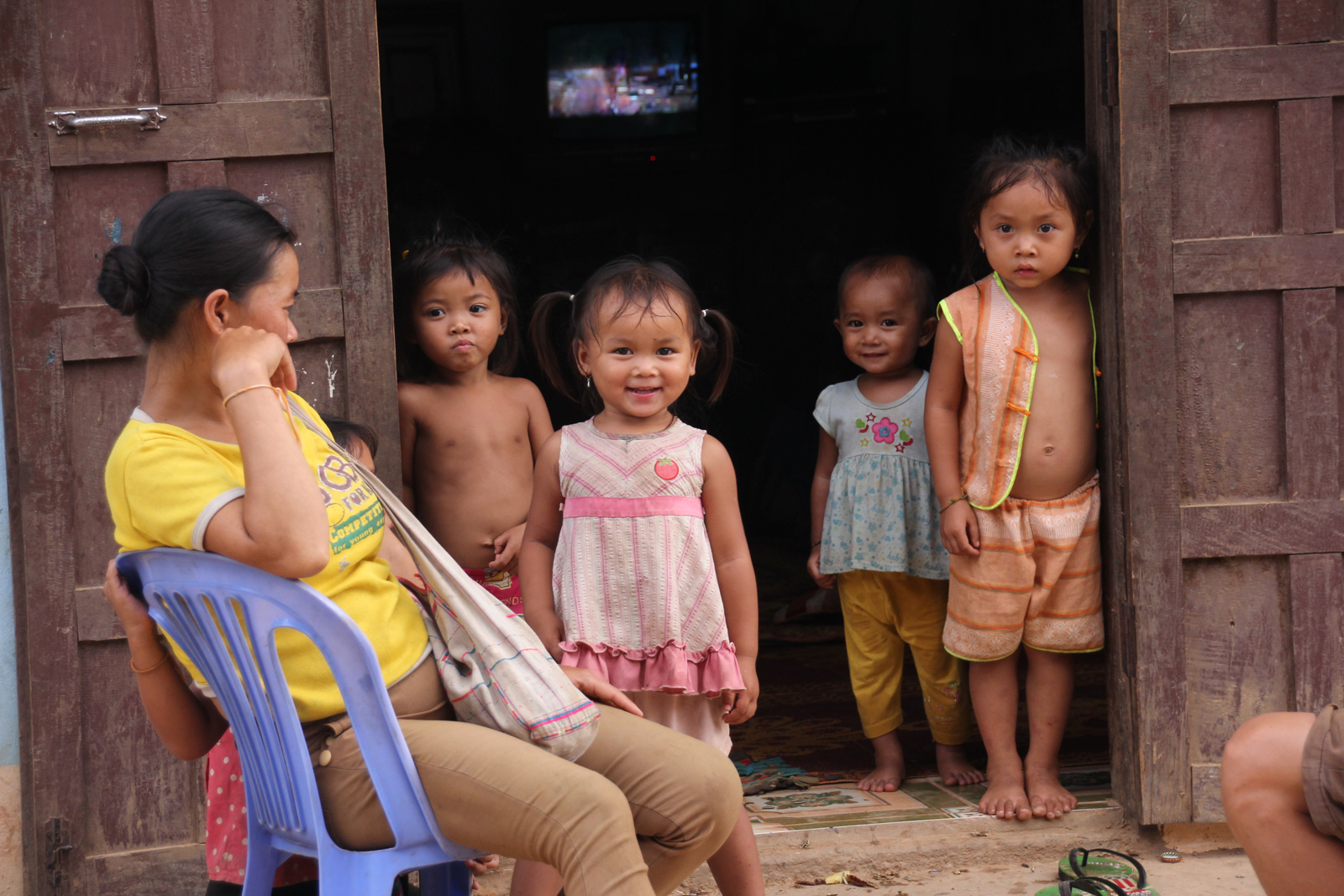
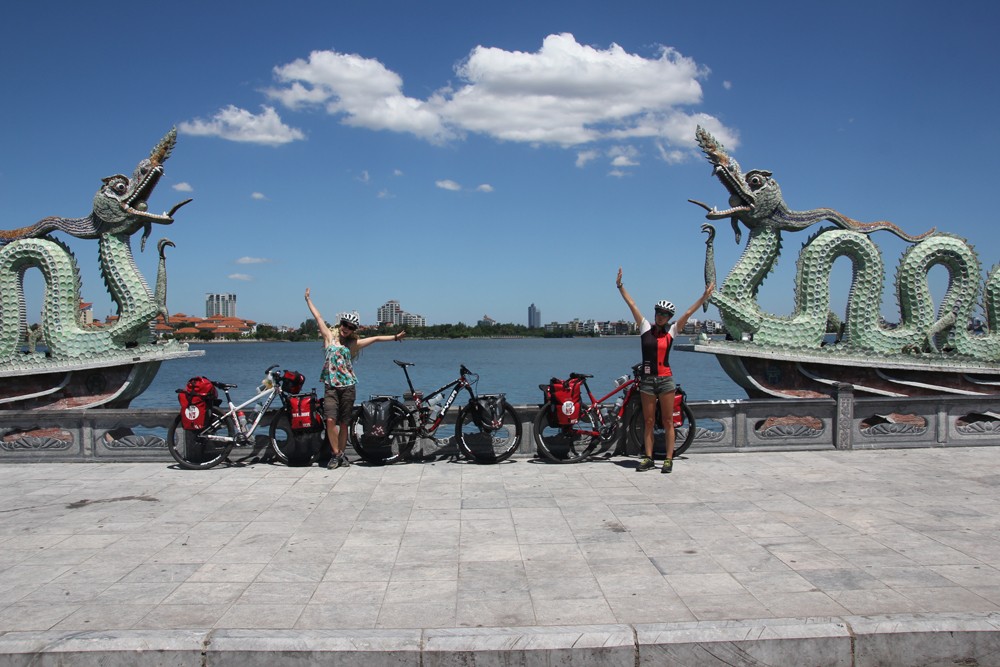
A glimmer of hope
In Vietnam, we were happy to have numerous positive and encouraging experiences. Many young Vietnamese adults already have a different mindset to that of the older generation. Nature conservation and animal rights are still relatively new concepts, but they are growing. Environmental NGOs and nature clubs at universities are being founded, and the first tentative steps in the right direction are being taken. A paradigm shift looks to be possible, after all.
At one of our school talks, a sixteen-year-old told us an especially uplifting story. Her dad, a wealthy businessman, received a piece of rhino horn as a gift. When the girl heard this, she told her father that it was a disgrace for the family to accept this offering. At school, she had learned about the ivory and rhino horn trade and the dreadful poaching of elephants and rhinos. As a result, her dad returned the rhino horn, proving the power that children and young adults have to change the world.


We also realised how crucial personal exchange is. For us, it was an eye-opener to experience the Vietnamese culture and learn about their traditions. On the other hand, the Vietnamese were impressed by these two crazy young ladies who were willing to give their time (and money!) for a good cause. The Vietnamese who have had the chance to travel to South Africa and experience the beauty of the African bush, often return as changed people and act as rhino ambassadors in their country.
In Ho Chi Minh City, we had the honour of meeting the famous pop singer Le Hong Nhung. This delicate, beautiful woman is very passionate about protecting the rhino. Her solution is to appeal to the Vietnamese national pride, as she believes that Vietnam would not want to be known as the country responsible for the rhino’s extinction. This was definitely the best solution that we heard while we were over there – address the message in a way that will have the most significant impact on the local people by appealing to their pride.
The war against rhino poaching will be won in Asia, not in Africa
There is no quick way to stop the current rhino crisis. The problem has to be tackled on different levels, including effective conservation, international collaboration, the strengthening of law enforcement on a global scale, and a fast crack-down on criminal syndicates. But in the end, the rhino has only one chance of survival – demand reduction. As the slogan of the well-known organisation, WildAid states: “When the buying stops, the killing can too.”
We firmly believe that creating awareness and educating the Asian public is the most crucial step towards saving the rhino. The war against rhino poaching will be won in Asia, not in Africa.
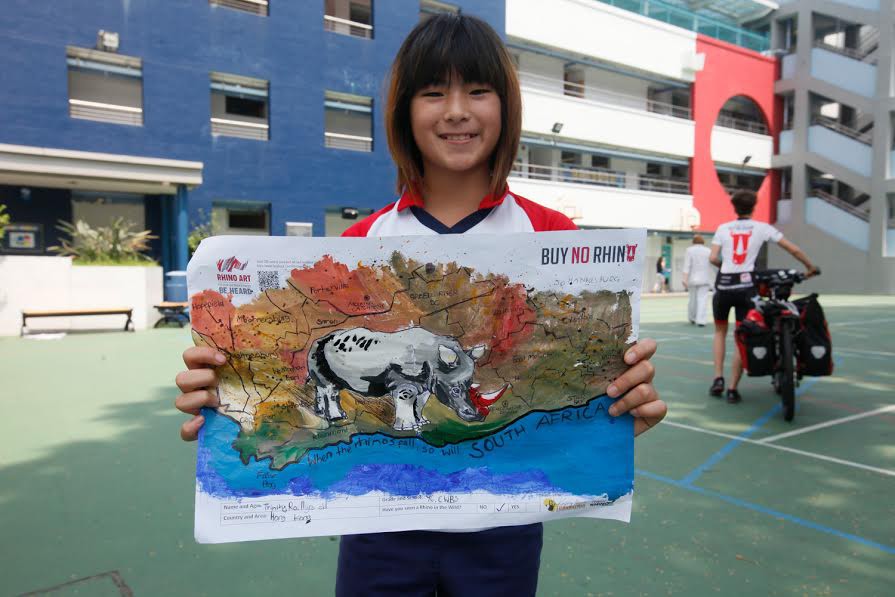

What can you do about rhino poaching?
Do you feel helpless, overwhelmed and saddened by the immense tragedy of the poaching situation? So did we. But that doesn’t mean that you can’t take an active approach.
First of all, inform yourself about the situation. Start by researching the facts, then become a rhino ambassador and talk to friends and family, creating awareness and spreading the seed of education. Use social media to share information and think of creative ways to tackle the issue. For example, one Australian businesswoman with no background in conservation launched a series of anti-rhino horn advertisements aimed at Vietnam’s wealthy elite.
So what could you do? Here are some ideas to start you off.
– Organise a fundraising event
– ‘Adopt’ or sponsor a baby rhino at a rhino orphanage
– Write an article for an international online news platform
– Blog some interesting facts
– Volunteer for a trusted organisation
Each action counts, and each action will have an effect.
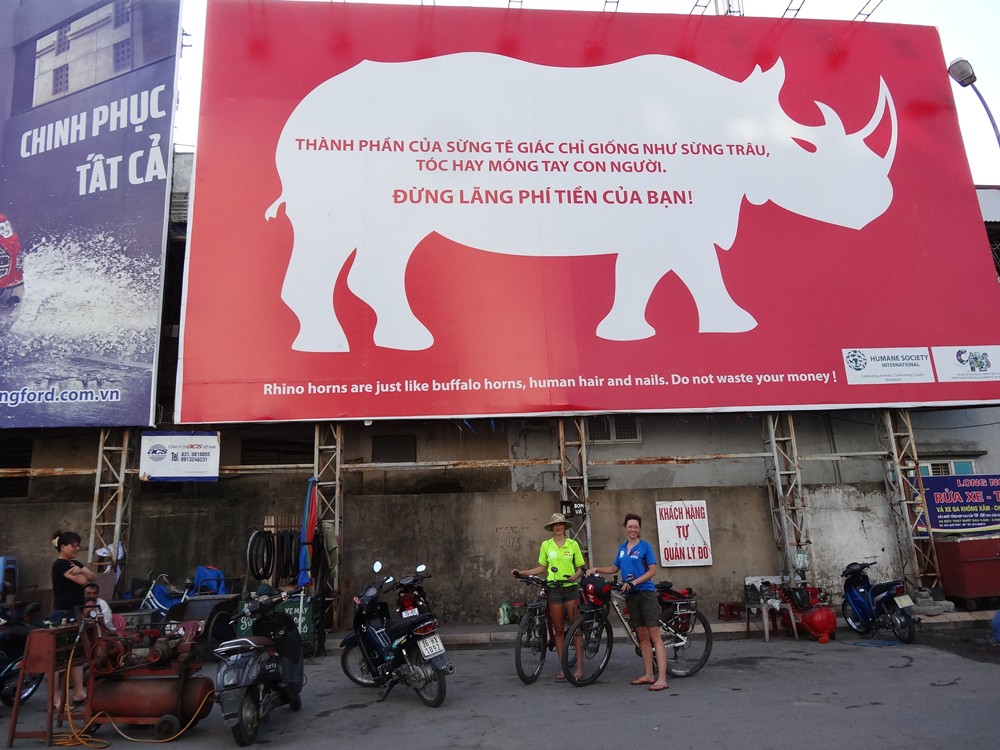
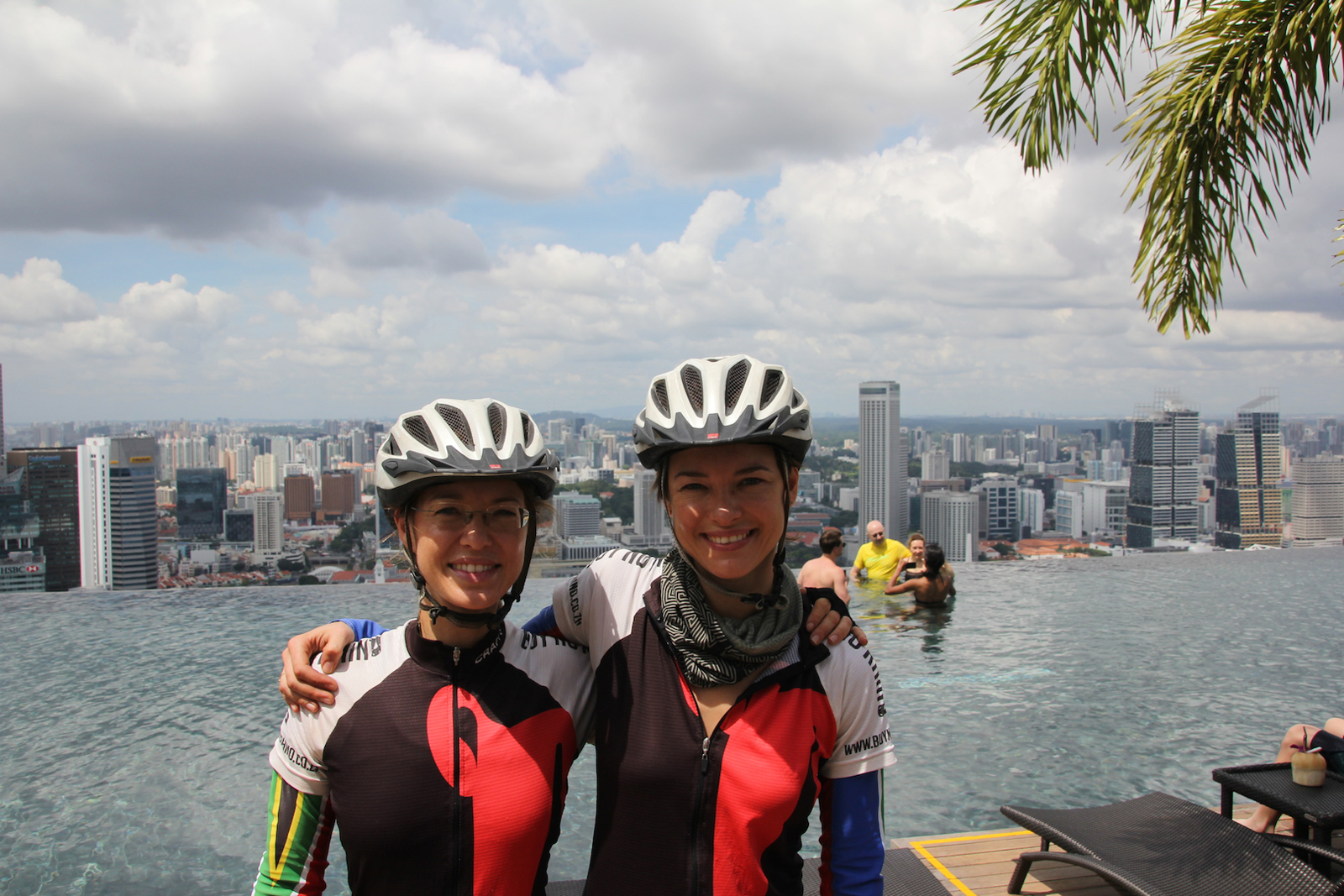
Did you know?
Rhinos used to roam the forests of South-East Asia. Asia is home to three rhino species – the Javan, the Sumatran (both Critically Endangered species) and the Indian rhino. Vietnam lost its last Javan rhino in 2010 when it got shot in Cat Tien National Park and had its horn removed.
Rhinos have very poor eyesight. However, they have an excellent sense of smell and hearing.
Rhino females are very nurturing, protective mothers who take great care of their babies. They are pregnant for about 18 months, after which only one calf is born. The calf then stays with its mother for about two to three years.
The white rhino is the second-largest animal after the elephant. It can weigh over 3,500kg.
Rhinos are fast on their feet. Black rhinos have been recorded to reach speeds of 55 km/h. The white rhino is somewhat slower at 40km/h.
Both the black and white rhino are actually grey. Apparently, early English settlers mistranslated the Afrikaans word ‘wyd’, which means ‘wide’, as ‘white’. The white rhino has a wide, flat, square lip for grazing from the ground, whereas the black rhino is a browser and picks at bushes and trees with its hooked lips.
Read about African rhinos here
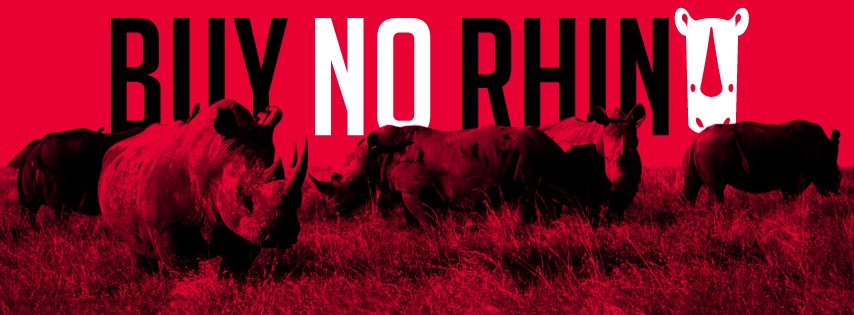
About the author
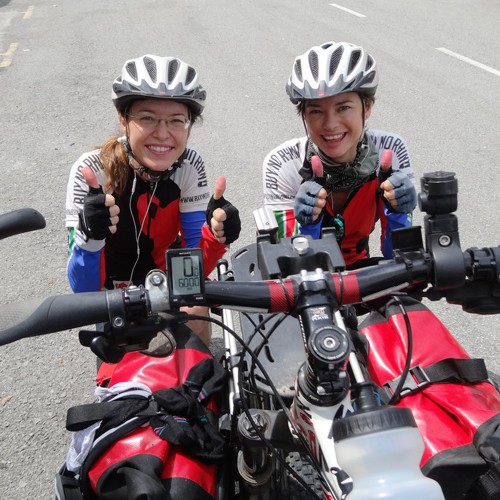 Vicky and Ness Wiesenmaier are sisters born in Cape Town, South Africa. They both love the bushveld and were struck by the severity of the rhino poaching situation while on a three-week holiday in Kenya back in 2012. Two years later, they decided to embark on a cycling adventure of epic proportions in April 2015 to create awareness about the rhino poaching issues in Africa. Their aim was to sow a seed of change in key consumer markets in Southeast Asia, even if they could not change a whole culture.
Vicky and Ness Wiesenmaier are sisters born in Cape Town, South Africa. They both love the bushveld and were struck by the severity of the rhino poaching situation while on a three-week holiday in Kenya back in 2012. Two years later, they decided to embark on a cycling adventure of epic proportions in April 2015 to create awareness about the rhino poaching issues in Africa. Their aim was to sow a seed of change in key consumer markets in Southeast Asia, even if they could not change a whole culture.
Vicky is a financial controller based in Germany, and Ness works as a fashion buyer in Cape Town. They conceived the idea for their trip and made relevant plans over many Skype conversations, and their call for change has been heard far and wide over the past year.
To comment on this story: Login (or sign up) to our app here - it's a troll-free safe place 🙂.![]()




